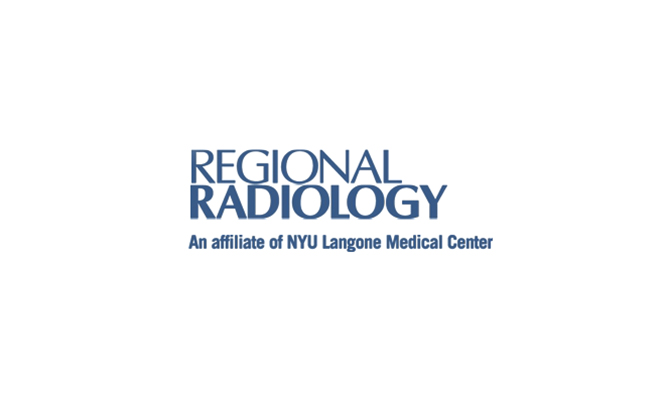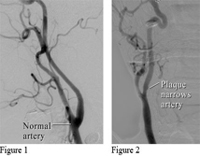

 Angiography, also called an arteriogram, is the x-ray imaging of an artery using a contrast material to detect or precisely locate a blockage. A thin tube called a catheter is inserted through an IV needle into the vessel being examined, where it is carefully positioned. The material is then injected and x-rays are taken. If a problem is detected or diagnosed that requires further treatment, a minimally invasive procedure will usually be possible using the same or a similar catheter.
Angiography, also called an arteriogram, is the x-ray imaging of an artery using a contrast material to detect or precisely locate a blockage. A thin tube called a catheter is inserted through an IV needle into the vessel being examined, where it is carefully positioned. The material is then injected and x-rays are taken. If a problem is detected or diagnosed that requires further treatment, a minimally invasive procedure will usually be possible using the same or a similar catheter.
Angioplasty and vascular stenting are minimally invasive procedures performed to improve blood flow in the body's arteries. In an angioplasty, the artery is inflated with a balloon that is delivered and removed by a thin tube called a catheter. Stenting, often performed at the same time, involves the implantation of a flexible wire mesh tube called a stent that holds the newly expanded artery open. These procedures are particularly beneficial for patients suffering from peripheral vascular disease, carotid artery or coronary artery disease, renal vascular hypertension and other disorders that block or narrow the blood vessels.
Central venous catheters are hollow tubes used for the efficient delivery of chemotherapy drugs, fluids, blood or other medications, or for regular blood sampling, over the course of a few weeks or months. One end of the catheter is placed in the largest vein in the chest, called the Superior Vena Cava or SVC, while the other end may be tunnelled just beneath the skin's surface or surgically implanted (portacath or "port"). Catheters called PICCs (Peripherally Inserted Central Venous Catheters) may be inserted via a peripheral blood vessel.
Thrombolysis is the term for treatments that break up a clot (thrombosis) blocking blood flow in an artery or vein. Clots may form when blood does not flow smoothly, as can happen with infection, injury, surgery, atherosclerosis, diabetes and vascular and heart disease. If undetected or left untreated, clots can lodge in the heart, brain, lungs or other major organs, causing severe injury and even death. A clot may be dissolved with an injected medication during thrombolytic therapy, or it may be broken up by a mechanical device in a thrombectomy. Thrombolytic procedures thus improve blood flow and relieve symptoms (if experienced) while eliminating the need for more invasive surgery.
In an embolization, material is injected through a catheter into a blood vessel to block blood flow. This is often performed to stop excessive bleeding due to a tumor, ulcer or injury, or to relieve symptoms caused by a tumor or malformation by cutting off its nutrient supply. Embolization can also be helpful in controlling aneurysms and reducing the appearance of vascular lesions such as hemangiomas. Injected materials may remain in the body permanently or only temporarily, depending on the condition being treated. Diagnostic imaging using ultrasound, CT or MRI will be performed before the procedure.
Fibroid tumors, also called myomas, are benign masses in the uterus that can cause heavy menstrual bleeding and pain and pressure in the pelvis. Fibroid embolization involves the injection of tiny particles into the two arteries in the uterus via a catheter under local anesthesia. This blocks blood flow, killing the fibroid tissue, shrinking the tumors and relieving symptoms. Embolization can be an alternative to hysterectomy in pre-menopausal women with symptom-causing fibroids who do not plan on becoming pregnant and is an alternative to open surgery for those who do not wish to receive blood transfusions. The procedure may also be used to reduce bleeding caused by childbirth or malignant tumors.
TIPS, short for transjugular intrahepatic portsystemic shunt, can improve blood flow in patients with poor liver function in place of invasive surgery.
IVC Filters are inserted through a small incision and placed in the inferior vena cava (IVC) in the leg to prevent blood clots there from breaking loose and reaching the heart.
Dialysis grafts are synthetic bridges that connect veins to arteries and are used in hemodialysis treatment for patients with kidney failure. Dialysis grafts that become blocked can be treated with thrombolysis or angioplasty.